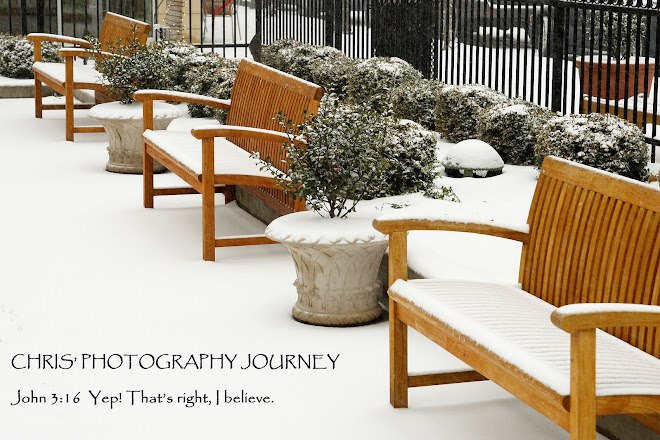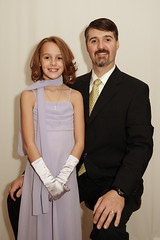You don’t have to stop here, however. Is there a telephone pole in the photograph that is distracting? It can be removed. Remember that great shot of the bird you took last year? Maybe this photograph would look better if we copied that bird and pasted it into our new photograph. We can brighten teeth, remove wrinkles, erase stray hairs, change the color of people’s clothes, replace the background, and add or remove elements until the photograph looks exactly the way we want. Then we can print it and share it with the world. The problem is this…is it real?
You are probably asking yourself, “So what?” If you are happy with the result and other people like it, what does it matter if you made a few small changes or even several major changes? The answer to that lies in who the intended audience is, and how the photograph will be used. A very famous Chinese photographer is finding out how important that can be right now. One of Liu Weiqiang’s photographs was recognized as one of the top ten news photographs of the year. Here is a copy of that photograph.

It shows a very nice scene of antelope running near a train that is passing by. As it turns out, this image is the result of combining at least two separate photographs. The train is in one photograph and the antelope are in another, but they were never anywhere near each other. In the news world this is called fraud. You can read about the whole incident on the ZonaEuropa website and at China Daily.
You and I can make any level of changes to our photographs that we want because we are not representing them as news photographs. We are not using our photographs to tell the world, “This is what happened!”. If we are, we need to be aware of how important accurate photographs are. The AP forbids their photographers from making any significant changes to their photographs. Is there a mailbox in the foreground of that great photograph of the President? Too bad. The image must stand on its own. AP photographers even need to be careful how they crop their photographs. It is possible to change the way a photograph communicates by simply cropping out certain elements. News photographs need to be as honest as possible. They must visually tell the story. We must be able to trust them or how can we trust the articles that they support?
Unfortunately, the Chinese government used this photograph to show that the high speed train was not bothering the antelope (which is a breed on the endangered species list). The train may or may not bother the antelope. I have no idea. That is not the point. What is important is that the photograph is a lie. What you see did not really happen. This would not be a big deal if the photographer was honest about it and simply communicated the details of how this photograph was produced. In that case it becomes a piece of art and the artist can change it any way he wants. Make the antelopes purple with green dots if you want. But, never say the image is real unless it is. The photographer has resigned in shame and will have a cloud over his work for a long time, maybe even forever. His editor also lost his job.
As we progress as photographers, it is a good idea to stop and ask ourselves how our photographs are going to be used. We have some wonderful and powerful tools at our disposal, and I have seen them used to create fantastic images. We can share these with the world as long as we are honest about how we created them. When the intent of the photograph changes and is designed to document what really happened, make sure you keep that idea firmly in your mind. There is no such thing as too much honesty with news photographs. Keep the original image. Document any changes you made. That way when you share these with the world you can say, “I was there, and this is how it really happened.”



1 comment:
Chris - interesting post. I agree, the new age of photography has made it even easier to alter photos. I even read one post on a msg board asking of setting white balance and curve/levels adjustment was being "dishonest." I guess it could be argued where is the line drawn. I of course don't beleive setting curves/levels, sharpening or standard post processing techniques is being dishonest. If that's the case, every P&S image is dishonest since all that is done in the camera.
BUt you are right, you run into gray areas if you start cloning out stuff, like an errant telephone pole. It could be argued that its not taking away, but enhancing the image. But it does get into dangerous territory.
I wish I coudl remember the article I read as you probably would have enjoyed it. It was about this very subject, but applying it to family photos. Of course, its a much different realm than a journalist, but interesting points were brought up. For instance, if Uncle Jim didn't make it to the family reunion, how about cloning him in! Or if you niece divorced her husband, how about cloning him out of pictures! It was a very interesting read. Also talked about how the art of the random snapshot is declining. You know, those pics you snapped when someone was frowning, making a funny face, etc. Now it can easily be fixed! NOw the question is, is this good?
Another point you could mention too is contextual use of photographs. You may have a photo that is "real" and not doctored up, but how about contextual use. Case in point, there was an article a few months ago about Hillary Clinton, about the wear and strain of running a campaign that found itself in 2nd place. The picture they used was of a haggard, worn looking Hillary Clinton. Picture was probably valid and not doctored, they just got her at the wrong time. BUT, I would bet the picture was not from teh same day or general time period. It was probably from a stock of photos taken at a much different time and used laster. How about that? That could be considered dishonest not due to altering the photo but its contextual use. But it just shows how photos, just like words, can be used to express just about any point you want to make, all dependent on its contextual use. There was also a photo that caused a little of a stir in Europe of Bush. He was at a University of Texas Longhorns game and made the school's "hand sign" which apparently is the same sign used by devil worshippers (or something to that effect). So the caption read something like "Bush is a devil worshipper!" and people in Europe were genuinely confused. OF coures, he was just supporting a football team. All contextual!
Excellent read and good points. I would even extend it to beyond photojournalists. Is it "fair" or right that we doctor our family photos to make them perfect? Of course, different type of ethical dilema, a family photo isn't being used in a newspaper, but still, it could really take from the character. As for me, I don't doctor my photos much at all. One case, I did clone out a few things for a portrait of my wife and daughter, but I kept hte original and I don't go as far as cloning people out, or their expressions.
Post a Comment